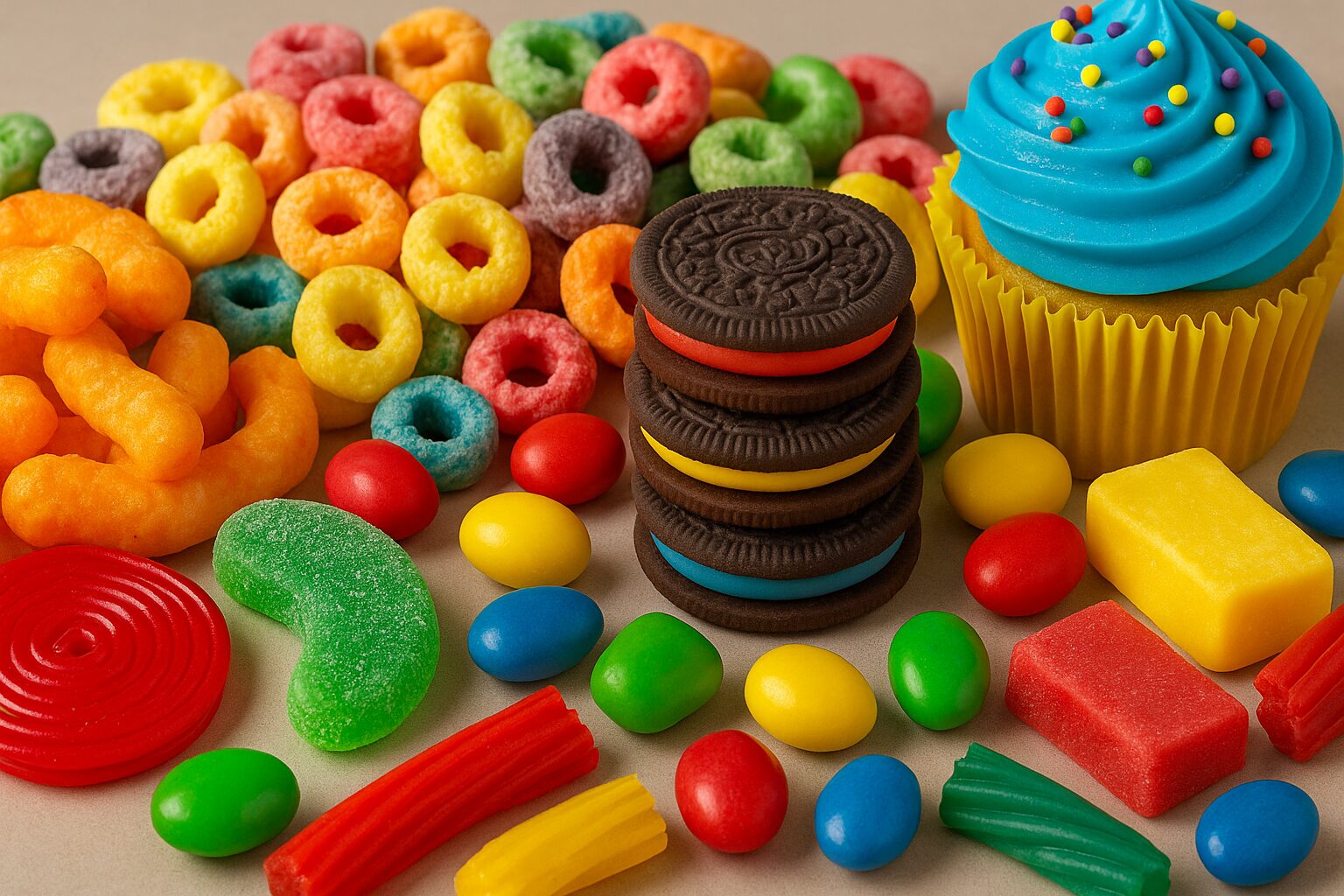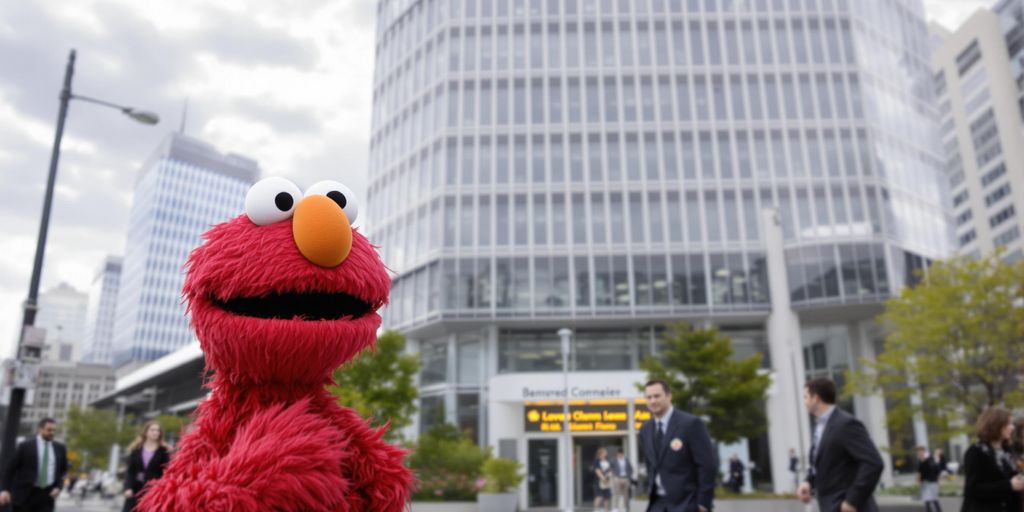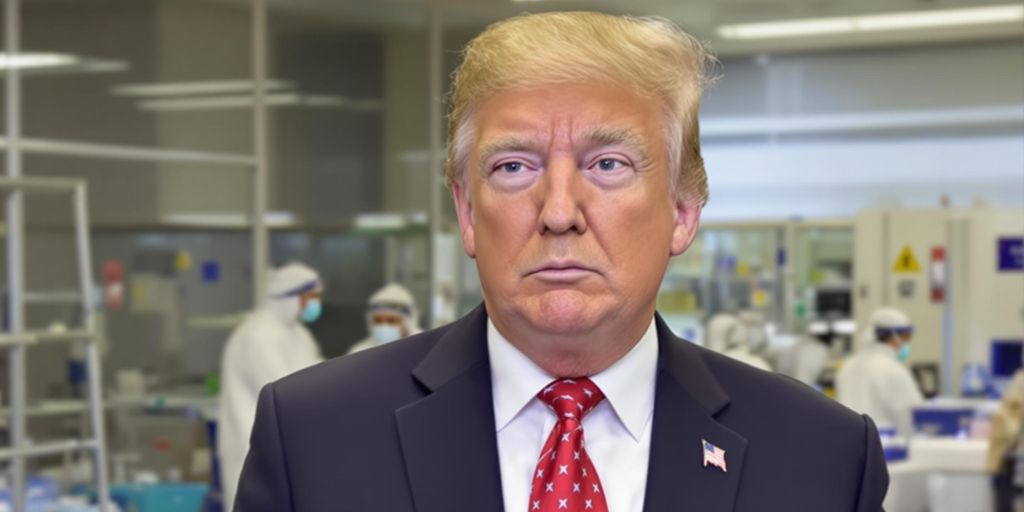In a significant move aimed at improving public health, Health Secretary RFK Jr. has announced plans to phase out eight artificial dyes from the U.S. food supply. This decision comes amid growing concerns about the potential health risks associated with these synthetic colorings, particularly for children. The initiative is set to reshape the food industry and promote a shift towards more natural alternatives in food products.
Key Takeaways
- Health Secretary RFK Jr. announced a phase-out of eight artificial dyes in food.
- The FDA will implement this plan by the end of 2026, focusing on natural alternatives.
- The decision is driven by health concerns, especially regarding children’s well-being.
- Food manufacturers will need to reformulate products to comply with new standards.
- Public response is mixed, with some advocating for better food safety and others concerned about industry challenges.
Health Secretary’s Announcement on Artificial Dyes
Overview of the Phase-Out Plan
Okay, so here’s the deal. The Health Secretary just dropped a pretty big announcement about artificial dyes. Basically, they’re planning to phase out eight of them from our food supply. It sounds like a huge undertaking, and honestly, it kind of is. The FDA is taking the lead, and they’re aiming to get this done by the end of next year. It’s all about potentially improving public health, especially for kids. I saw Trump’s rollback of regulations, and this is a welcome change.
Timeline for Implementation
So, how’s this all going to work? Well, the FDA is supposed to set up a standard and a timeline for food companies to switch to natural alternatives. They’re also planning to revoke authorization for dyes that aren’t even being used anymore, which makes sense. And they’re going to figure out how to get the remaining dyes off the market. It sounds like a pretty organized approach, but I’m sure there will be some bumps along the way. Here’s a rough timeline:
- Now: FDA begins establishing standards for natural alternatives.
- Next Few Weeks: Authorization revoked for unused dyes.
- End of 2026: Goal to have all eight dyes phased out.
Impact on Food Industry
This is where things get interesting. Obviously, this phase-out is going to have a big impact on the food industry. Companies that use these dyes are going to have to reformulate their products, which could be costly and time-consuming. I imagine there will be a lot of research and development going on as they try to find natural alternatives that can provide the same colors and effects. It’s going to be a challenge, but it could also lead to some innovative new products. I wonder what artificial colors will be used instead.
Details of the Eight Artificial Dyes
List of Dyes to Be Phased Out
Okay, so RFK Jr. is making moves to get rid of eight artificial dyes. What exactly are these dyes? Well, from what I gather, the list includes some pretty common ones. We’re talking about the usual suspects that give our food that unnaturally bright look. The FDA is planning to eliminate these petroleum-based dyes by the end of next year. This includes Green No. 3, Red No. 40, Yellow No. 5, Yellow No. 6, Blue No. 1, and Blue No. 2. Plus, there are steps to pull authorization for two more: Citrus Red No. 2 and Orange B. It’s a pretty comprehensive sweep, aiming to overhaul the ingredients in many products. It’s a big deal because these dyes are everywhere, from candies to cereals.
Health Concerns Associated with Dyes
So, why the big push to get rid of these dyes? It all boils down to health concerns. There’s been a lot of debate and research about the potential negative effects of these artificial colors, especially on kids. Some studies suggest links to hyperactivity and allergic reactions. For example, Red No. 3 is being removed from food by January 2027 and from medications by 2028 because it was shown to cause cancer in rats. While the science is still evolving, many people feel it’s better to be safe than sorry, especially when it comes to what our kids are eating. It’s not just about hyperactivity either; some worry about long-term health implications that we might not fully understand yet. This is why there’s such a strong movement to find natural substitutes.
Public Reaction to the Announcement
Unsurprisingly, the announcement has stirred up a lot of reactions. On one hand, you’ve got consumer advocacy groups and health-conscious parents cheering the move. They see it as a win for public health and a step in the right direction. These groups have been pushing for changes like this for years, signing petitions and demanding that companies remove artificial colors. On the other hand, some people are more skeptical, wondering if the risks are really that significant or if this is just another case of overregulation. There’s also the food industry’s perspective, which we’ll get into later, but it’s safe to say that this decision has definitely sparked a conversation. Advocates say the dyes carry health risks and serve no purpose beyond the cosmetic. It’s all about making food look more attractive, especially to children, by masking the absence of a colorful ingredient, like fruit.
Regulatory Changes and Standards
FDA’s Role in the Phase-Out
The FDA is stepping up to the plate, ready to lead the charge in phasing out these artificial colors. Commissioner Marty Makary mentioned at the press conference that the FDA will set a clear standard and timeline for the food industry to transition to natural alternatives. They’re also planning to revoke authorization for dyes that aren’t even being used anymore in the coming weeks. It sounds like they’re trying to get the ball rolling quickly.
New Standards for Food Colorings
So, what’s next for food coloring? Well, the FDA is working on authorizing four new natural color additives. This is a big deal because it gives food manufacturers more options as they reformulate their products. The goal is to make sure that the new standards are safe and effective, while still allowing companies to create appealing products. It’s a balancing act, for sure.
Collaboration with Food Manufacturers
It seems the FDA is trying to work with the food industry on this, not against it. Makary said they’ve had “wonderful meetings” with food companies, and that the companies are eager to make these changes. However, not everyone is thrilled. The International Association of Color Manufactures, a trade group for the color additives industry, has already questioned the proposed timeline, saying that reformulating products is complex and could lead to supply chain issues. The Consumer Brands Association, representing packaged food and beverage makers, indicated its members would work with the administration, but cited the difficulty in adhering to a “patchwork” of differing state laws.
Potential Benefits for Public Health
Improved Health Outcomes for Children
Okay, so, if these artificial colors are actually phased out, what’s the big deal? Well, a lot of people think it could really help kids. There’s been a ton of talk about how these dyes might mess with kids’ behavior, especially when it comes to hyperactivity and attention. Getting rid of them could mean fewer kids struggling in school and at home. It’s not a guaranteed fix, but it’s a step in the right direction, right?
Reduction of Allergic Reactions
Some folks are just straight-up allergic to these dyes. I mean, imagine eating something and then breaking out in hives or having trouble breathing. Not fun! So, yeah, cutting these dyes out of our food could seriously reduce the number of allergic reactions people experience. It’s not just about comfort; it’s about safety, too. Less risk of a trip to the ER? I’m all for it.
Long-Term Health Implications
Okay, this is where it gets a little more complicated. Some studies have hinted at links between these artificial colors and some pretty serious health problems down the road. We’re talking about stuff like cancer and other chronic illnesses. Now, the science isn’t totally clear on all of this, but it’s enough to make you wonder, you know? If we can cut these dyes out now, maybe we can avoid some of those risks later on. It’s like, why take the chance if we don’t have to? It’s a long game, but it could be worth it.
Here’s a quick look at potential long-term benefits:
- Reduced risk of certain cancers (potential link, further research needed).
- Lower incidence of chronic inflammation (some studies suggest a connection).
- Improved gut health (artificial dyes can disrupt gut bacteria in some individuals).
Industry Response to the Phase-Out
Challenges in Reformulating Products
Let’s be real, changing up a recipe isn’t as easy as swapping one ingredient for another. When you’re talking about artificial colors, you’re dealing with stuff that affects not just the look of the food, but also the taste and texture. Companies are going to have to spend a ton on research and development to find natural alternatives that work just as well. Plus, these alternatives might be more expensive, which means we could see prices go up. And what about products that rely on those specific colors for branding? Think about it – a bright blue sports drink suddenly turning a murky green? That’s a marketing nightmare.
Consumer Advocacy Groups’ Perspectives
While the food industry is trying to figure things out, consumer advocacy groups are pretty stoked about this whole phase-out thing. They’ve been pushing for this for years, arguing that these dyes are linked to all sorts of health problems, especially in kids. They see this as a big win for public health and are already calling on companies to move even faster than the FDA’s timeline. I saw one group saying that this is a chance to make our food supply safer and healthier for everyone. It’s a good point, but I also wonder if it’ll actually change people’s buying habits. Will people really choose the naturally colored option if it costs more or doesn’t look as appealing? Only time will tell.
Future of Food Coloring in the U.S.

Shift Towards Natural Alternatives
Okay, so RFK Jr.’s announcement about phasing out those eight artificial colors? It’s kind of a big deal. For years, people have been side-eyeing those synthetic dyes, and now it looks like things are actually changing. The big shift we’re going to see is a move towards natural alternatives. Think beet juice instead of Red 40, or maybe spirulina for that vibrant blue. It’s not just about swapping ingredients, though. It’s about how these changes will affect the taste, texture, and even the shelf life of our favorite snacks. Companies are going to have to get creative to keep things looking and tasting the same, but without the artificial stuff.
Consumer Trends in Food Choices
Consumers are getting smarter, or at least more aware. People are actually reading labels now, and they care about what’s in their food. There’s a growing demand for transparency, and that includes ditching artificial colors. You see it everywhere – organic sections are getting bigger, and “natural” products are flying off the shelves. This phase-out is just going to accelerate that trend.
Global Perspectives on Food Dyes
It’s interesting to see how other countries handle food dyes. In Europe, for example, they often require warning labels on products with artificial colors. That’s why you see a lot of American companies using natural alternatives over there already. Canada is also pretty strict. The U.S. has been a bit behind the curve, but this phase-out could bring us more in line with global standards. It’s not just about regulations, though. It’s about consumer perception. In many parts of the world, artificial colors are seen as unnecessary and even harmful. This move could help the U.S. catch up and show that we’re taking food safety seriously. The FDA is taking steps to eliminate synthetic dyes by the end of 2026.
Historical Context of Food Dyes in America
Evolution of Food Coloring Regulations
The history of food coloring regulations in the U.S. is a long and winding road, marked by periods of lax oversight followed by bursts of reform. In the early days, pretty much anything went. Companies used all sorts of substances to color food, some of which were downright dangerous. It wasn’t until the early 20th century that the government started to step in, with the passage of the Pure Food and Drug Act in 1906. This act was a game-changer, setting the stage for more stringent regulations down the line. Even so, it took decades for truly effective rules to be put in place.
Past Controversies Surrounding Dyes
Oh boy, where do I even begin? There have been so many controversies surrounding food dyes over the years. One of the most infamous was the Red Dye No. 2 scare in the 1970s. It was widely used, then suddenly banned after studies suggested it might be carcinogenic. That sent shockwaves through the food industry. And let’s not forget the ongoing debate about the link between artificial dyes and hyperactivity in children. Even though the FDA maintains that most dyes are safe, many parents and advocacy groups aren’t convinced. It’s a constant back-and-forth, with new studies and concerns popping up all the time.
Lessons Learned from Previous Bans
Previous bans on food dyes have taught us a few important lessons. First, it’s crucial to have solid scientific evidence before taking action. Hasty decisions based on flimsy data can create unnecessary panic and disrupt the food supply. Second, finding suitable alternatives is key. If you ban one dye without offering a viable replacement, manufacturers will struggle to maintain the appearance and appeal of their products. Finally, transparency is essential. Consumers have a right to know what’s in their food, and clear labeling can help them make informed choices. The move towards natural substitutes is a good example of this in action.
Looking Ahead
As RFK Jr. moves forward with this plan to eliminate artificial colors, it’s clear that this could change how many products are made and what we find on our grocery store shelves. While some folks are excited about the idea of more natural ingredients, others are worried about how this will affect food choices and prices. It’s going to be interesting to see how the food industry adapts to these new rules and what it means for consumers. One thing’s for sure: this is just the beginning of a bigger conversation about food safety and health in America.
Frequently Asked Questions
What is RFK Jr.’s plan about artificial dyes?
RFK Jr. announced that the U.S. will stop using eight artificial dyes in food by the end of 2026.
Why are these dyes being phased out?
These dyes are being removed because there are health concerns, especially for children.
What are the names of the dyes being banned?
The specific names of the eight dyes have not been released yet, but they are all synthetic.
How will this affect food products?
Many food products will need to change their ingredients to replace these dyes with natural colors.
What is the timeline for this phase-out?
The phase-out is planned to be completed by the end of 2026.
What do health experts say about this change?
Health experts believe that removing these artificial dyes could lead to better health for children and reduce allergic reactions.




